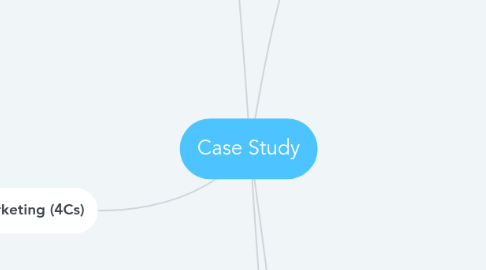
1. Success Factors
1.1. Innovative & Outside-the-box concept
1.1.1. Virtual scavenger hunt which is in an augmented reality
1.2. Well Built, unique brand that fits the concept
1.3. Use of the right technology
1.4. Right target audience at the right time
1.5. Simplicity
1.6. Connection & Competition
1.6.1. Setting up competition (Collect characters in game)
1.6.1.1. Creates social currency
1.7. Rewards
1.7.1. Players get bonuses and incentives along the way
1.8. Nostalgia
1.8.1. Childhood game/show
1.9. Social proof
1.9.1. When everyone is seen playing it everywhere, more and more people will want to try the game as well
1.10. Low learning curves
1.10.1. Easy to pick up the basics of the app
2. Market Analysis
2.1. Target Audience
2.1.1. Main Target Audience: Millennials who grew up with Pokemon. People who are just out of college or just starting their careers.
2.1.2. More and more adults are hooked to Pokemon Go
2.2. Company Capabilities
2.2.1. Support the right values: This App encourages users to go outside, which is important in the age of advanced technology
2.2.2. Fan Events have huge Promotional value: The Pokemon Go craze has initiated many spontaneous player gatherings
2.2.3. Good Timing: Good timing is important for a Product Launch. The game was launched in the beginning of July, which is a time when Americans are trying to find a way to break their summer routine. Kids are out of school and most adults are enjoying their days off work.
2.2.4. Pokemon Go was created by a company called Niatic, which is a big brand that have also created other popular games.
2.3. Collaboration
2.3.1. Starbucks: have 7800 outlets to become in-game Pokestops. These Starbucks outlets will serve exclusive Pokemon Go Cappuccino
2.3.2. MacDonalds: First major company to partner with Pokemon Go
2.3.3. TonyMoly (South Korean beauty Company): TonyMoly teamed up with Pokemon Go to come up with Pokemon-themed beauty products
2.4. USP/Positioning
2.4.1. Rewarding loyal fans: Pokemon Go reward their most loyal players that invest time and money in building their pokemon team
2.4.2. No need for expensive Ad Campaign: Pokemon Go mainly uses Social Media for their advertising campaigns, which is completely free
3. Social Media Marketing (4Cs)
3.1. Content
3.1.1. Facebook
3.1.1.1. Official Pokemon GO Page
3.1.1.1.1. Almost 2 million likes and followers
3.1.2. Twitter
3.1.2.1. Official Pokemon GO twitter account
3.1.2.1.1. With 2.25 million followers
3.1.2.1.2. 234 tweets
3.1.3. Instagram
3.1.3.1. Official Pokemon GO account
3.1.3.1.1. With 1.1 million followers
3.1.3.1.2. 501 posts
3.2. Context
3.2.1. Famous hashtags used in all social media platforms such as - #PokemonGO, #GottaCatchEmAll, #PokemonProblems
3.3. Connection
3.3.1. Number of posts across all the social media platforms by users
3.3.1.1. https://www.socialbakers.com/blog/2617-pokemon-go-invades-social-media
3.4. Community
3.4.1. Pokemon GO Fan pages all around the different social media platforms to include game tips as well as memes
3.4.2. Reddit forums which allow users with similar interest to interact such as about the game Pokemon GO
3.4.2.1. https://www.reddit.com/r/pokemongo/
4. SWOT Analysis
4.1. Strengths
4.1.1. Pokemon GO is the first of it's kind
4.1.2. Strong group of investors For ex. Nintendo, The Pokémon Company, and Alsop Louie Partners.
4.1.3. Many companies and restaurants looking for sponsorship with Niantic
4.2. Weaknesses
4.2.1. Loses market of China due to the ban of Google
4.2.2. Uses JAVA as their language
4.2.3. High operating costs. For ex. Server cost, expensive office locations in San Francisco, Los Angeles etc..
4.2.4. Relatively small company, 51-200 employees
4.2.5. Niantic has a bad PR rep
4.3. Opportunities
4.3.1. Market in China is still an unexplored territory
4.3.2. Has yet to go public
4.3.3. Augmented reality is still an unsaturated market
4.3.4. There are still many Pokémons not yet added to the game
4.4. Threats
4.4.1. Extremely long development period for Pokémon GO allowing users to get bored easily
4.4.2. Multiple advocacy against Niantic privacy terms
4.4.3. Hacking of their system
5. Marketing Mix
5.1. Product
5.1.1. Pokemon Go allowed players to experience playing a game while traveling to various places in the physical world
5.1.2. Pokemon Go gave players a whole new mobile gaming experience by allowing players to experience what it is liked to play in an augmented reality
5.2. Price
5.2.1. Application is free to download but allows players to purchase in-game items using real money
5.2.1.1. Players can spend real money to purchase pokecoins which is the in-game currency which is used to purchase premium items
5.2.1.1.1. Prices range between $0.99 to $99.99 for various amounts of pokecoins
5.3. Place
5.3.1. Google PlayStore
5.3.2. Itunes App Store
5.4. Promotion
5.4.1. Not a single tv commercial
5.4.2. Niantic only tweeted about release dates
5.4.3. Released a short trailer in September 2015
5.4.4. Release details on game at E3 video game conference
5.4.5. Promoted mostly through unsolicited word of mouth on social media by many core fans of the original game

